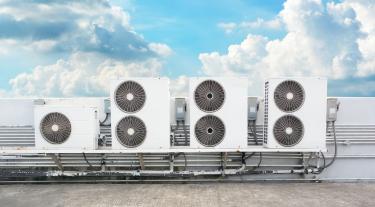Cooling is critical for health, prosperity, and the environment. It is central to our industrial and transport infrastructure, protects the safety and quality of our food, medication and livelihoods. As the planet warms, the most vulnerable people are often located in the hottest climate zones and will need cooling for protection.
Yet traditional cooling technologies are highly polluting. They are energy intensive and use gases much more potent than CO2. As a result, cooling accounts for 7% of all greenhouse gases. As prosperity expands and global temperatures increase, demand for cooling will rise. Without cleaner cooling solutions, these emissions will increase from 3.8-4.1 gigatonnes of emissions each year to 18.8 gigatonnes of CO2 by 2050. That’s the equivalent of 37% of the total greenhouse gas emissions in 2020.
So, does our need for cooling risk heating the planet further?
Cooling in a nutshell; why we need it
We need to acknowledge cooling’s role in cutting emissions from food waste. Food production accounts for 26% of total greenhouse gas emissions. Yet, a third of all food produced for human consumption – which amounts to 1.3 billion tonnes – goes to waste each year. Of these food-related emissions, possibly one quarter comes from uneaten food. More efficient cold chains keep produce fresh from farm to supermarket. Greater access to cooling could save 475 million tonnes of food waste and with it, the associated emissions from insufficient cooling.
On top of that, cooling can counter wilting economies. A 2019 International Labour Organisation report predicts that by 2030, 2-5% of working hours will be lost each year due to rising temperatures. High nighttime temperatures exacerbate heat-related stress and health problems, offering little respite from oppressive heat. With the Global South projected to face dangerously high temperatures, interventions like air conditioning become essential for safeguarding outdoor workers, as well as those in offices and factories.
Finally, cooling's significance in the energy transition is often overlooked. As countries generate more renewable energy, national grids must become more flexible. Here is where cooling solutions step in. Clean cooling solutions not only minimise cooling-related emissions, but when used as an energy storage battery, they can also alleviate pressure on national grids.
The roles to play in accelerating clean cooling solutions
As it stands, 1.12 billion people across poor rural and urban areas remain at high risk of heat stress due to a lack of access to cooling. Our vision is that by 2050, we can expand access to cooling, while simultaneously switching to clean cooling solutions. Net Zero cooling can be achieved by focusing on three impact areas:
- Passive cooling;
- Super-efficient equipment and appliances; and
- Ultra-low global warming potential (GWP) refrigerants and insulation foam gases.
Find out more about these impact areas and how they need to expand in our report ‘Pathway to Net Zero Cooling’.
Cooling equipment and refrigerant manufacturers are making real strides in the development of cleaner cooling technologies. But they are experiencing external headwinds which are slowing their efforts towards Net Zero. To overcome these barriers, we need everyone to play their role in minimising cooling emissions, starting with sustainable cooling policies, investment and greater collaboration between energy companies and innovators.
150 nations, including the US, Chile, Indonesia and Senegal have signed the Kigali Amendment — an agreement aimed at reducing hydrofluorocarbons (HFCs). This powerful move could reduce global warming by 0.5C by 2100. We urge the remaining 43 nations, yet to sign on, to ratify this agreement. After all, policymakers hold the key to promoting sustainable and clean cooling technologies. Through policies and regulations, governments can unlock access to low GWP refrigerants, enabling equipment manufacturers to deploy climate-friendly products.
Asian and African nations have taken the lead in creating cooling action plans as part of their Nationally Determined Contributions. As they put these plans into action, they should also explore the extra benefit of using cooling as cold energy storage.
Financial institutions and investors can accelerate the deployment of cooling innovation by providing funds for green or sustainability-linked bonds. They can help cooling manufacturers build or upgrade factories to produce innovative and clean cooling solutions. As demand for clean cooling technologies grows, additional capital flow can foster their expansion. This makes them an attractive consideration for ESG portfolios.
Read our WWF impact story



